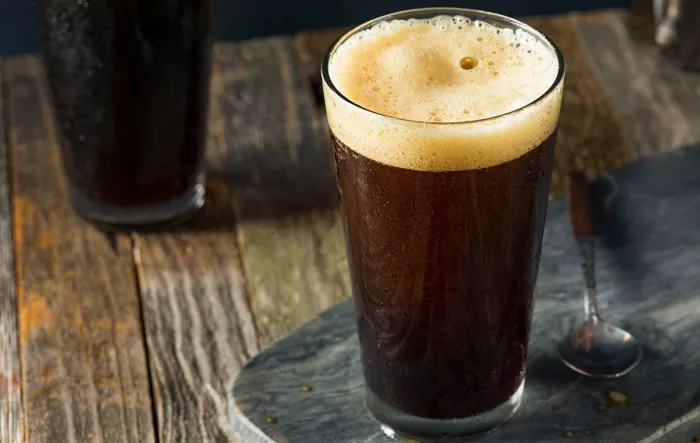Espresso bitterness can ruin your coffee experience. Many coffee lovers struggle with this common problem. The bitter taste often comes from how you prepare the espresso. But other factors also play important roles. Bitterness is a natural part of coffee’s flavor profile. However, when it becomes too strong, it overwhelms other pleasant tastes. The key is finding the right balance. Proper technique can help you reduce unwanted bitterness while keeping the good flavors.
Coffee Bean Quality Matters
Your espresso’s taste starts with the beans. Low-quality beans often taste more bitter. They may contain defects or improper processing flavors. Always choose fresh, high-quality beans from reputable roasters.
The roast level affects bitterness too. Dark roasted beans develop more bitter compounds. If you prefer less bitter espresso, try medium or light roasts. These preserve more of the coffee’s natural sweetness.
Bean freshness is crucial. Stale coffee loses its pleasant flavors. What remains often tastes flat and bitter. Use beans within 2-4 weeks of roasting for best results.
Grinding Problems Cause Bitterness
Grind size significantly impacts espresso extraction. Too fine grinding leads to over-extraction. This pulls out too many bitter compounds from the coffee.
An inconsistent grind creates uneven extraction. Some parts under-extract (sour taste) while others over-extract (bitter taste). Invest in a good burr grinder for uniform particles.
Grinder heat can also affect flavor. High-speed grinding generates heat. This may prematurely release bitter oils. Consider grinders with slow operation or cooling features.
Water Quality and Temperature Effects
Water makes up about 90% of your espresso. Poor water quality can ruin good coffee. Hard water (high mineral content) often emphasizes bitterness.
The ideal water temperature is 90-96°C (195-205°F). Too hot water extracts more bitter compounds. Too cold water under-extracts, making weak but still bitter coffee.
Water pressure in espresso machines should be about 9 bars. Higher pressure can force out undesirable flavors. Regularly check and maintain your machine’s pressure.
Extraction Time and Its Impact
The perfect extraction time for espresso is 25-30 seconds. Shorter times may leave coffee sour. Longer extractions become increasingly bitter.
Watch your shot carefully. It should start flowing about 5-8 seconds after you start the pump. The stream should look like warm honey – thick and golden brown.
If the shot runs too fast (under 20 seconds), your grind is probably too coarse. If it takes over 35 seconds, the grind is likely too fine. Both can create bitterness.
Machine Maintenance Issues
A dirty espresso machine makes bitter coffee. Old coffee oils build up and turn rancid. These contaminate fresh shots with unpleasant flavors.
Clean your machine regularly. Backflush with water after each use. Use cleaning solutions weekly. Replace water filters as recommended.
Scale buildup from hard water affects machine performance. It changes water flow and temperature. Descaling every 2-3 months prevents these problems.
Tamping Technique Mistakes
Tamping pressure should be consistent – about 15-20 kg (30-40 lbs). Uneven tamping causes channeling. Water finds easy paths, leading to uneven extraction.
The tamp should be perfectly level. Even a slight angle creates uneven extraction. Some parts over-extract (bitter) while others under-extract (sour).
Use a proper tamper that fits your basket well. The wrong size leaves gaps at the edges. These become channels for water to rush through.
Coffee Dose and Ratio Problems
The standard dose is 18-20 grams of coffee for a double shot. Too much coffee can make extraction difficult, leading to bitterness. Too little coffee extracts too quickly.
The brew ratio (coffee to water) matters too. Traditional espresso uses 1:2 (e.g., 18g coffee to 36g liquid). Longer ratios (1:3 or more) often taste more bitter.
Experiment with different ratios to find your preference. Some modern espresso styles use shorter ratios (1:1.5) for sweeter, less bitter results.
Bean Origin and Processing Methods
Different coffee growing regions produce distinct flavors. Some naturally have more bitter characteristics than others. Try beans from various origins to find your favorite.
Processing methods affect flavor too. Natural processed beans often taste fruitier and less bitter. Washed processed coffees might show more acidity and bitterness.
Altitude affects bean density and flavor development. Higher altitude beans often have more complex flavors that can balance potential bitterness.
Solutions to Reduce Bitterness
First, check your grind size. Make small adjustments and test the results. The right grind should give you proper extraction time.
Use fresh, filtered water at the correct temperature. This simple change often improves flavor significantly.
Clean your equipment thoroughly. Pay special attention to the group head and portafilter. Old coffee residues contribute to bitterness.
Try different beans. Look for descriptors like “smooth,” “sweet,” or “balanced.” Avoid terms like “intense” or “bold” if you dislike bitterness.
When Bitterness Might Be Good
Some bitterness is normal in espresso. It balances sweetness and acidity. Traditional Italian espresso often has a pleasant bitter note.
Chocolatey or nutty bitter flavors can be desirable. These differ from harsh, unpleasant bitterness. Learn to appreciate good bitterness in moderation.
As your palate develops, you may enjoy more complex flavor profiles. What seems bitter at first might reveal subtle sweetness later.
Professional Tips for Better Espresso
Keep a coffee journal. Note your dose, grind, time, and taste results. This helps identify what changes improve flavor.
Let your espresso rest for 10-15 seconds after pulling the shot. Some harsh flavors mellow during this time.
Try salting your espresso lightly. A tiny pinch of salt can reduce perceived bitterness without making coffee taste salty.
Conclusion
Bitterness in espresso comes from many factors. By controlling these variables, you can achieve better balance in your cup. Remember that perfect espresso requires patience and practice.
Start with fresh, quality beans and proper equipment maintenance. Then focus on consistent grinding and dosing. Finally, perfect your extraction technique. With these steps, you’ll enjoy espresso with pleasant, balanced flavors instead of overwhelming bitterness.


